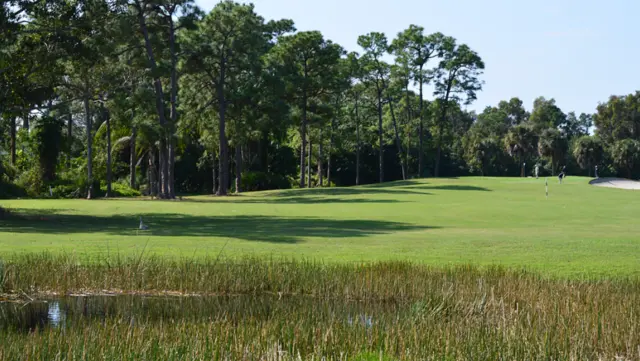
Smart Planning for Course Asset Lifespan
Our experts give their insight in managing the lifespan of every golf course asset.
Every asset on your golf course has a lifespan — from the greens to the tees, the bunkers to the irrigation system, and the equipment you use to maintain it all. Managing these assets and planning for their eventual replacement takes careful planning and budgeting. We talked with some of our experts to get their insights on how to go about this. Here’s what they had to say.
Create an Asset Management Account
First and foremost, take time to catalog your assets. Create a detailed inventory, assess the value of each, and depreciate against the lifespan of each item. That’s just good business.
Don’t stop there. Take the extra step and create a capital fund for the replacement value of each asset and if possible, contribute to it with every budget cycle. Fail to do that and you could be caught by a very expensive surprise such as replacing an irrigation system. Not only can surprises cost millions, they can also cost you tens of thousands in lost business.
Know the Lifespan and Age of Your Assets
One way to avoid being caught short is to know approximately how long your course assets will last. The American Society of Golf Course Architects has put together a useful chart detailing the expected life cycles of major course assets. You can find the detailed chart on their site or refer to the summary below:
| Course Asset | Expected lifespan |
|---|---|
| Greens | 15-30 years |
| Bunker Sand | 5-10 years |
| Irrigation System | 10-30 years |
| Cart Paths – asphalt | 5-10 years |
| Cart Paths – concrete | 15-30 years |
| Practice Range Tees | 5-10 years |
| Tees | 15-20 years |
| Corrugated Metal Pipes | 15-30 years |
| Bunker Drainage Pipes | 5-10 years |
| Mulch | 1-3 years |

The figures listed are estimates. Obviously, the quality of construction, materials, installation, and even the weather conditions under which these assets exist play a role in their lifespan. The extent to which ongoing maintenance has been performed also influences these numbers. Nonetheless, use the chart as a guide and determine where your assets lie in their lifecycles. Create a “birthday chart” of sorts and budget for replacing items as they near the end of their useful lives. This will help you plan your labor and budget dollars proactively and avoid costly reactive expenses, especially for these big-ticket items.
A Word About Equipment Maintenance
Your course assets also include equipment—from golf carts for members to machinery for the crew. Fortunately, most of these items come with manuals and many newer models are equipped with built-in computers that indicate when service is needed. Unfortunately, that’s not true for all equipment; depending when you bought yours, the manual may be the only guide you have for a maintenance schedule.
While scheduling regular maintenance is always a good idea, taking advantage of some of the recent technology innovations can also help you track important service milestones and plan maintenance. These resources include:
- Toro offers an online system called myTurf. The software goes on your mechanic’s computer. As he inputs hours of use for your fleet, the software will calculate maintenance requirements and send out reminders when service is due. For an additional cost, you can add wireless meters that automate the process of tracking hours of use — a big time-saver that we use at BrightView and have found to be worthwhile.
- TRIMS is an online software solution for tracking everything from facility and equipment maintenance to spare parts inventory. The only downside to this solution is the amount of time required to keep the system updated with the information required. You will need to plan on having an equipment manager spend a couple hours a day just inputting all the data.
There are other companies like TRIMS who offer applications for inventory, equipment, and maintenance management. These companies include Tofino Software, ToolWatch®, and ManagerPlus®. For courses who regularly rent or own Cat® equipment, asset management tools can be found on the Cat® site and at the Empire Cat® site.
Don’t Make Out of Sight, Out of Mind
Equipment, greens, cart paths—generally speaking, your superintendent has a daily visual read on how these assets are faring, but there are other costly assets underground that need to be monitored as well. These include irrigation and drainage systems. Periodic audits to ensure pumps are functioning and water pressure is adequate help ensure the useful life of these items. Flushing and cleaning pressure relief valve helps as well.
It can be difficult to convince a board of directors to set aside money in the budget for the labor and parts needed to do all of the above, let alone find time your crew is available to take on this type of work. Boards are more likely to approve budget for more highly visible items, such as clubhouse furniture or landscaping. If that’s the case, simply remind them of the replacement value and ask that they consider the cost of yearly maintenance versus the cost of a new drainage or irrigation system.
Budget Now, Save Later
We’ve been working with clients on proactive asset management for years, and they’ve found tremendous value in the process. Savings and member retention gained by not having to stop or suspend play on the course is a big part. Our article on “Zombie Golf Courses” provides a cautionary tale on what can happen when you don’t have a good asset replacement fund in place. Feel free to share it with your board if you’d like.
Outstanding Golf Course Maintenance
You set the standard, we make it happen. We’re laser-focused on continuously refining the science, technology, and operations of golf course maintenance so we can bring our clients a competitive advantage and a course their players are proud of.



